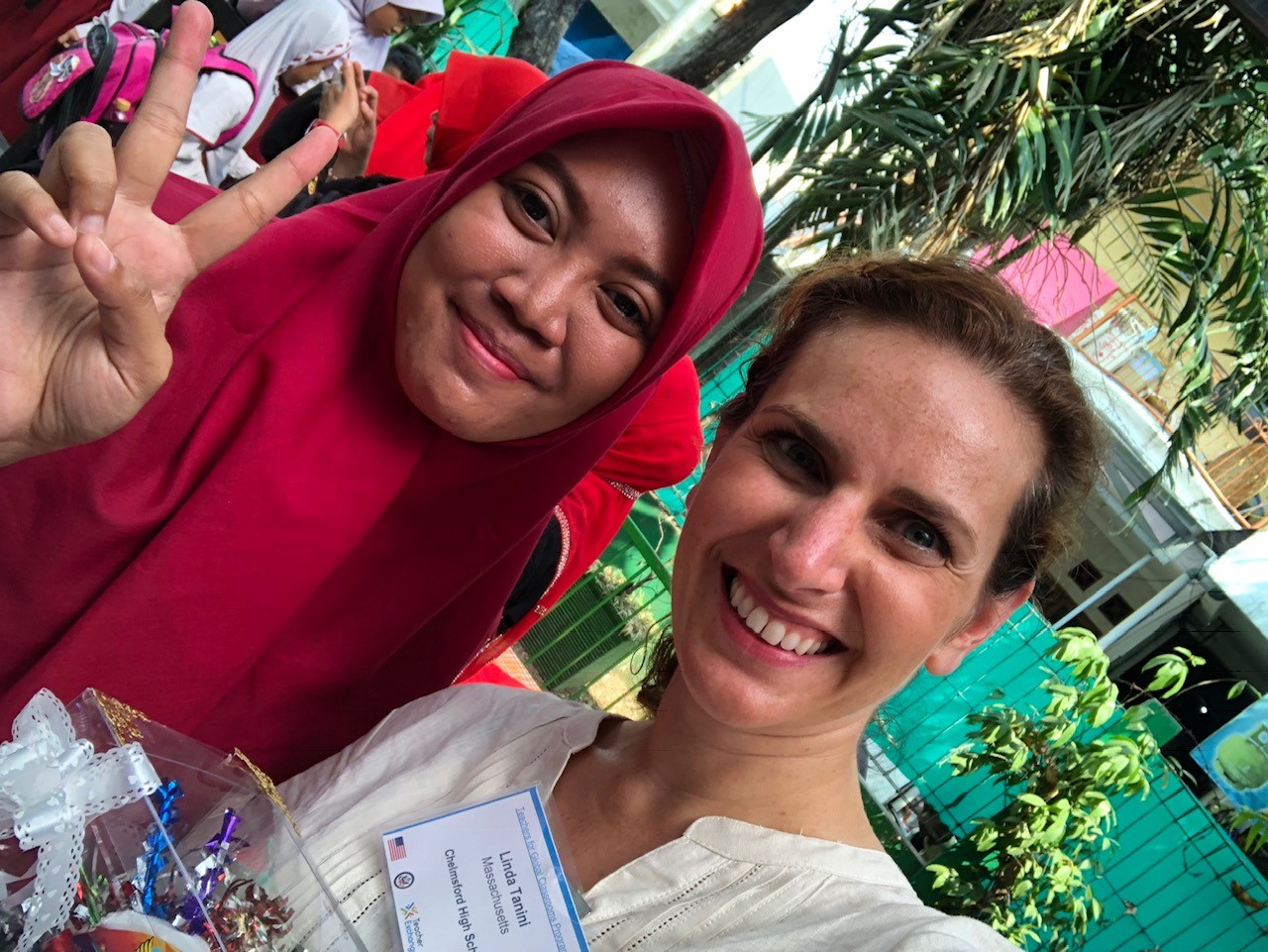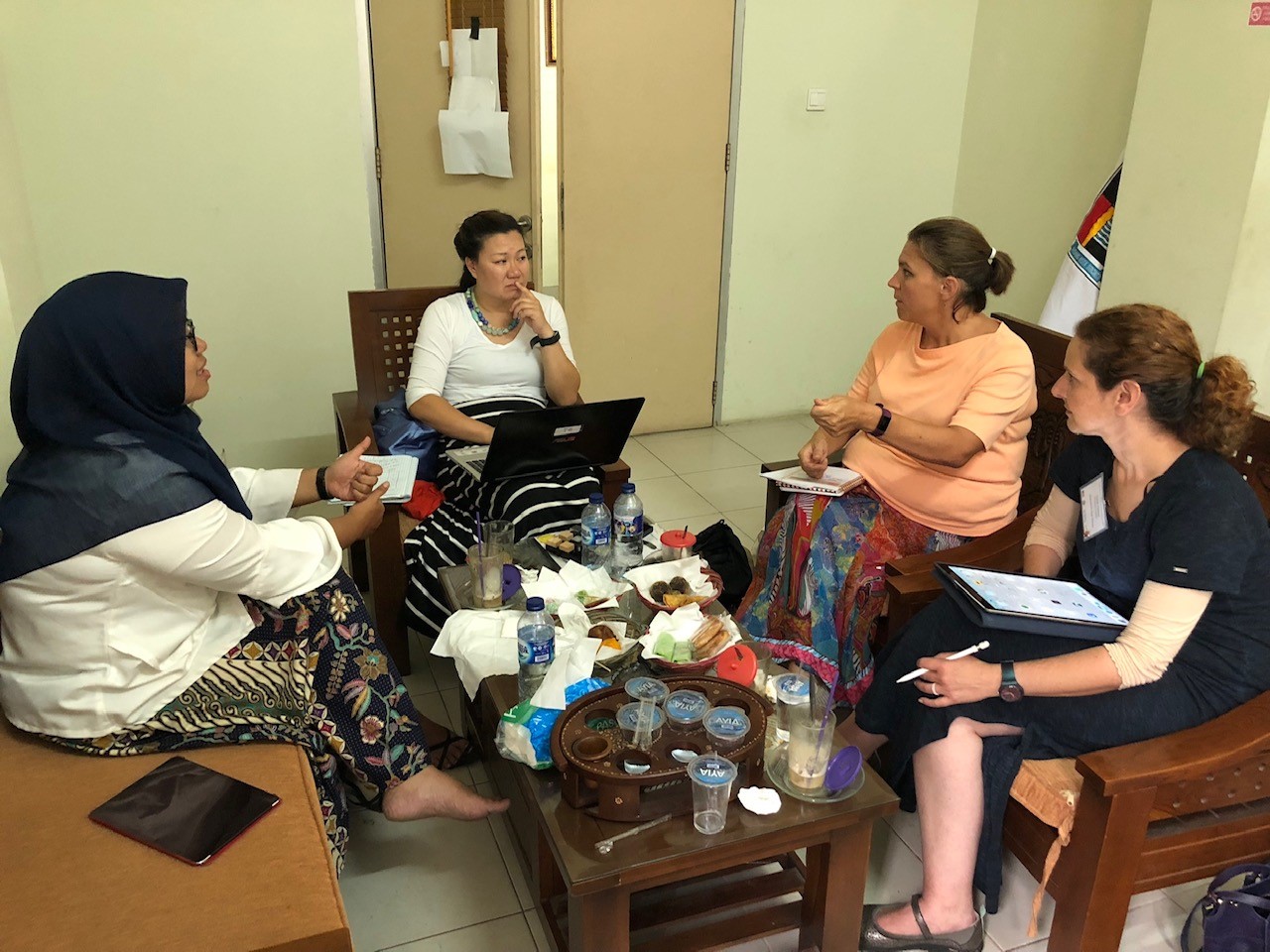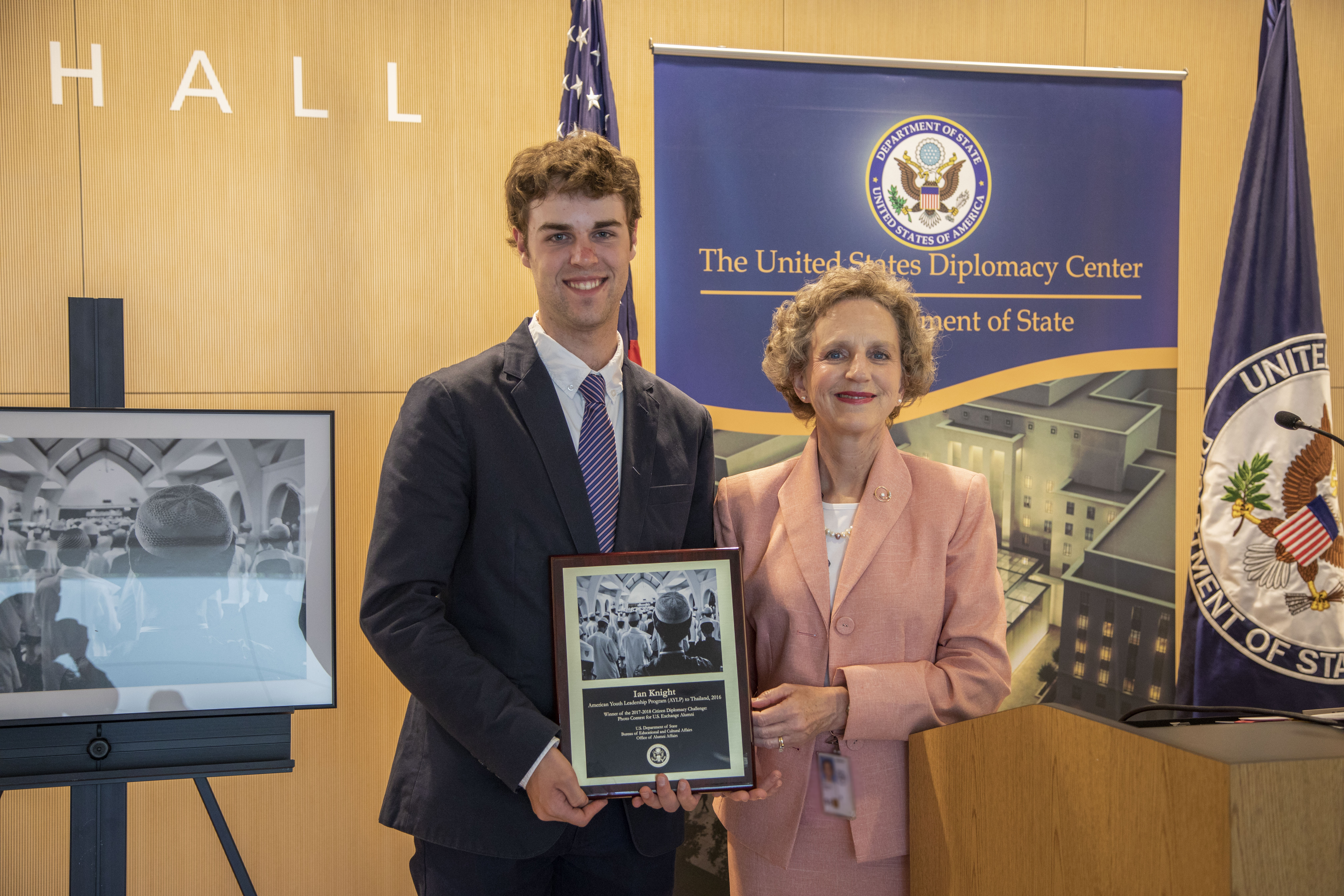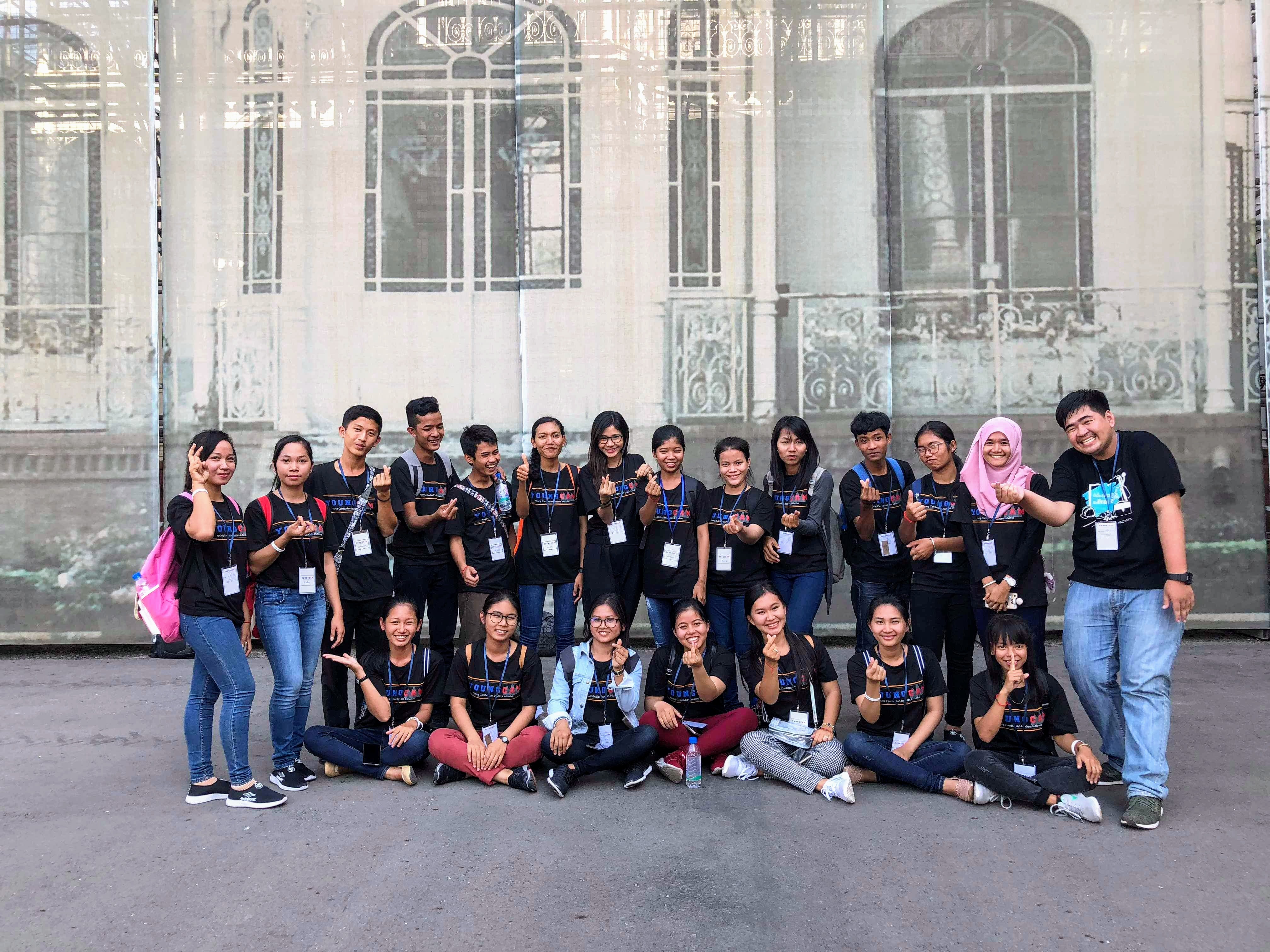Editor's note: Linda Tanini, a science teacher at Chelmsford High School in Massachusetts, traveled to Indonesia as part of the Fulbright Distinguished Educator Awards. In a blog post for Education Week, she shared how she integrated what she learned from her exchange experience into her classroom.
How does water affect culture in Indonesia?
When I found out that I would be traveling to Indonesia, I formulated this as a guiding question I could use while exploring this new culture. I wanted my experience to inform my classroom at home and incorporate the Sustainable Development Goals (SDGs) established by the United Nations. Investigating the connection between water and culture blends both my biology curriculum and the SDGs, and as I discovered, there were many real-life experiences I could then use in my classroom to help the students learn more about the world while simultaneously learning the curriculum standards.
Water and Culture in Indonesia
Indonesia is heavily tied to the water that surrounds its 1,700 islands, and this was evident when we visited an urban elementary school, and one of the parent volunteers proudly showed us a garden fountain they had made. The students used this garden as a respite during their school day and as a place to conduct experiments while observing nature and the ecosystem. Since it is located right outside the classrooms, the students could observe pollinators visiting the fauna or the fish thriving in the pool. Students also used old water bottles to construct planters for their garden. This small water garden is a great resource for introducing the importance of clean water to the ecosystem and humans.
Later, I had the opportunity to visit Jambak Sea Turtle Camp, a sanctuary that was set up by one individual who believed in the importance of saving these sea creatures. Sea turtle eggs are obtained and hatched at the sanctuary, and when the turtles are old enough, they are released back into the sea. The camp also conducts outreach since successful conservation requires educating the public, including students, on problems and solutions. A curriculum was designed to educate students on the importance of these turtles in the area's ecosystem. Additionally, Sea Turtle Camp sponsors "Beach Clean Up" days in which members of the community work together to help pick up any trash that has accumulated. These efforts clean the beach while the community members learn the importance of cleaning the area to protect the land for future use by the entire community.
Introducing Global Competence
After I returned home, I began looking at my curriculum through a different perspective. I realized that with a little adjustment, I could introduce a global perspective while ensuring that I fulfill all formal requirements. My 9th grade biology students needed the most learning support, so I started by looking at my biochemistry unit. I restructured the unit to address SDG goal #6: Ensure Access to Water and Sanitation to All. One of the biggest challenges that I had anticipated was convincing my students that this was a real issue. To address this, I began the unit by showing students a short BBC video entitled, "Why Indonesia's Capital Jakarta is Sinking." Next, I introduced students to the innovations I had experienced in Indonesia at both the school and Sea Turtle Camp. I continued to explore other situations in which the scarcity of clean water may be a problem, such as when a natural disaster like a hurricane or flood occurs, issues which happen regularly in Indonesia. I also expanded the examples to include natural disasters that have occurred in the United States in the last few years.
My students became more invested in the content because they were now more curious about the world and how it works. One of the first characteristics of a globally competent student is that they are able to investigate the world. I wanted my students to recognize that there are different perspectives, and everyone may not share the same ideas. To do this, I showed the students the different types of water-purification systems. Some were elaborate, such as the work of Jackie Brookner, an artist who created plant-based water-remediation projects. Others were more simplified, such as a short video clip from MythBusters on creating a solar still.
Lastly, I brought in a water purifier that is used by campers. I had the students determine the advantages and disadvantages of these different types of water-purification systems and which type would be best-suited for different situations. They were then challenged to research and design a water-purification system, outlining what type of situation it could be used for. They could make a quick purification system to help during a natural disaster or a permanent purification system that could be used in a park.
From this exercise, the students not only learned how to communicate their ideas, but they also started to devise a way to make a difference in the world and gained the skills they would need to take action. Initially, the students were a bit hesitant. However, as I circled around the room and began asking probing questions like, "How will your apparatus filter out the dirty water from the clean water?" or "How will you be able to ensure that you don't lose water through evaporation?," the students went to work modifying their original designs. The amount of water that was purified was recorded daily for over a week. After that week, the students were able to reflect on their work and write a brief overview of what they accomplished.
As we worked, we continued to discuss the real solutions that I had seen implemented in Indonesia. Projects at the school and Sea Turtle Camp reduced waste and cleaned the water, either through recycling supplies or cleaning up the water sources. In our class exercise, my students created a way to clean water, but they were initially bulky and not very efficient. I challenged them to think about how to make them more efficient and to consider the cost of supplies and how long it would take to get a sufficient amount of water.
The students became scientists as they worked to identify the problems and shortcomings of their solutions and develop improvements. At the same time, I also was able to more deeply engage students in the curriculum requirements while teaching them vital skills that will serve them well in our interconnected world.
#AEIF2017
Theme: Civic Participation: Building Resilient Communities
In Cambodia, 70% of the population of rural areas are young people, however the majority do not participate in community service activities. Seeing the potential of such a large youth population to make positive change in their communities, alumni of the Young Southeast Asian Leaders Initiative (YSEALI) created the #AEIF2017 project YoungCam.
YoungCam aims to encourage youth, ages 18-25, in rural Cambodia to become agents of change to solve their community issues through volunteerism. The program consisted of three stages: first was a series of three campaign workshops in the provinces of Battambang, Siem Reap, and Kampong Cham focused on the importance of volunteerism.
After a competitive selection process, 21 youth from all three provinces were selected to participate in a five-day training on program management, volunteerism, and community development. During the training, participants were divided into four groups by province and area of interest, and each group was assigned a mentor. Each team worked to address an issue they identified by creating a timeline, planning a budget, designing sustainable projects, and developing success indicators. At the end of the five days, participants competed for small grants to implement their projects and all four teams received funding to implement their projects.
The final stage of YoungCam was a participant reunion where, upon completion of all four projects, the 21 participants reunited to present and report on project successes and results.
The effect of YoungCam on the participants was deemed “life changing,” as they were able to grow their networks, initiate project ideas, and broaden their knowledge and action related to volunteerism. The impact stretched beyond those who directly participated in the program. After completing their community project, Team Angkor Health formed a long-term social club in their school, which gave them the ability to take on even more community projects in their hometown. The YoungCam participants have even encouraged their community members to learn more about social issues. Team Battambang Crop Pouch had 80 villagers attend their role-play competition that raised awareness for domestic violence issues, continuing education, and the environment.
Congratulations to the alumni who envisioned and carried out this project. They have passed along the spirit of volunteerism that they gained during YSEALI to mentor and develop young Cambodian leaders.
Are you feeling inspired by the YoungCam project? Now is the perfect time to sign in to your alumni.state.gov account, find your AEIF team and submit a project on Building Civic Participation, Good Governance, and Resilient Communities. Don’t wait! Applications can be submitted starting on February 1.
#AEIF2018
Theme: Promoting Inclusion and Educational Opportunity
“How can we help students with special educational needs thrive in the classroom?” This question, asked by Professional Exchanges and Teaching Excellence and Achievement (TEA) Program alumni from Ukraine, grew into the winning #AEIF2018 project titled “A World of Possibilities for Every Child.” The #ExchangeAlumni team created an inclusive classroom by combining an education campaign for students, parents, and teachers with support and training for children with special educational needs. The results of this project proved that student success in the classroom translates to positive results outside of school. Beyond the classroom, extracurricular activities curated by A World of Possibilities for Every Child has helped develop a culture of communication and improve interpersonal relationships, reduce bullying, and facilitate mutual understanding.
In Ukraine and in all parts of the world, the need for education for children with special needs at the secondary level (who attend regular, and not specialized schools) is increasing. In order to facilitate this, A World of Possibilities for Every Child provided a training to teachers on inclusive curriculum development. The project also held workshops and conferences in three regions of Ukraine, and the ideas were shared with alumni from 25 European countries at the October 2018 Alumni Thematic International Exchange Seminar (TIES) held in Kyiv.
In November 2018, this project was presented at the Odesa EFL Educational Forum for teachers of the New Ukrainian School, and forum attendees were receptive to the project’s mission.
As the project was launched in Kherson for its inaugural year, the leaders of the project are planning to expand its reach to more cities in Ukraine. The founders know that facilitating a more inclusive environment in the classroom is not unique to Kherson, and they have identified the potential for this project to grow on a large scale. One way that the project is growing is through its social media platforms, with members and followers from different regions in Ukraine and other countries. The lessons posted to the Facebook page and YouTube channel are free for members to adapt to their home communities.
Though inclusivity in the classroom can be a tricky problem to tackle, A World of Possibilities for Every Child is facing the challenge head-on and paving the way for inclusive classrooms in Ukraine and other parts of the world.
Are you inspired by the A World of Possibilities for Every Child project? Now is the perfect time to sign in to your alumni.state.gov account, find your AEIF team and submit a project on Promoting Inclusion and Educational Opportunity. Don’t wait! Applications can be submitted starting on February 1.









